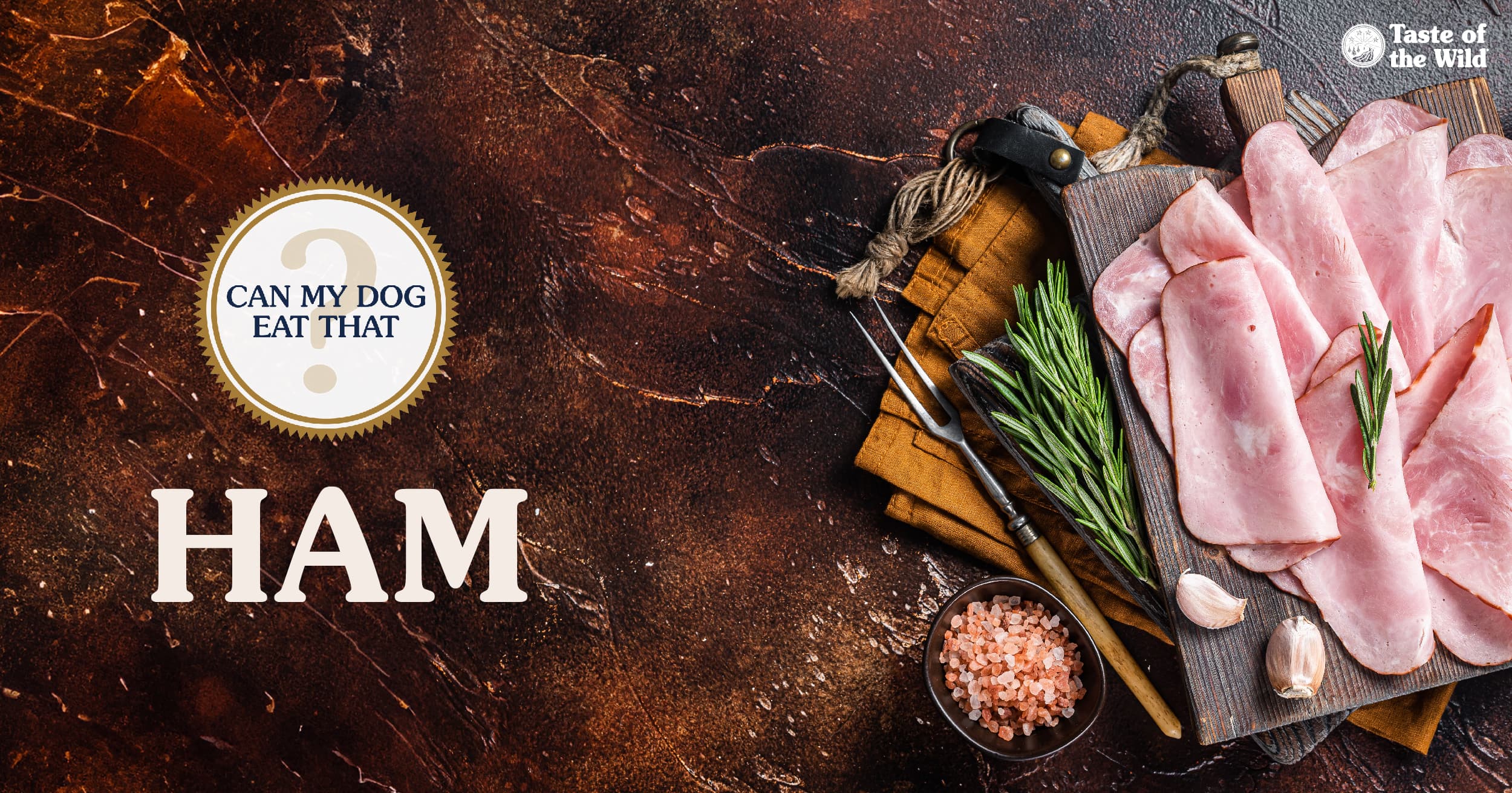
Welcome to “Can My Dog Eat That?,” our series that answers some obvious (and not-so-obvious) questions about what your dog can and can’t safely eat. Today we answer the question “Can dogs eat ham?” Read on!
You’ve been busy in the kitchen all day, cooking delicious foods like potatoes and sugar-glazed ham, and they’re ready to serve at the dinner table. You’re gone 30 seconds to get the side dishes, and you come back to find your drooling dog staring longingly at the ham. Or, if your dog’s a mischievous one, you find them on top of the table helping themselves.
So should you give in and throw your dog a tidbit of ham? Should you be concerned if they devoured half the ham before you could chase them away from the table? Well, anyone (human or canine) is going to feel bad after eating half a glazed ham. But there are a few reasons why even a small amount of ham isn’t a good idea for dogs.
Most Ham Isn’t Low Fat
Sure, you can buy 96 percent fat-free sliced ham, but most ham is not considered a low-fat food. Fat can be difficult for dogs to digest, and too much fat at one time can cause an upset digestive tract (e.g., vomiting and diarrhea). If your dog helped themselves to the holiday ham, there’s a good chance pancreatitis will ensue, as suddenly eating a high-fat meal is a common trigger. Not to mention, if your dog is regularly snacking on ham, the high fat intake can also lead to obesity.
Sugar, Salt and Preservatives, oh My
Depending on how it was prepared, ham can contain a high amount of sugar — which is not healthy for dogs. But the bigger problem is that ham is high in sodium (salt). The preservatives used to cure ham are also sodium-based. Too much salt in their diet can contribute to hypertension (high blood pressure) and heart disease. If your dog has chronic kidney disease, they should avoid ham (and other high-sodium foods) because hypertension can damage their kidneys further. Salt can also be toxic to dogs if they consume excess amounts of it, causing vomiting, diarrhea, dehydration, excessive thirst and urination.
How much sodium is in ham? According to one example on USDA FoodData Central, a 2 oz. portion of “maple glazed honey coat ham” contains 571 mg of sodium. That’s over twice the daily allowance of sodium (200 mg) recommended by the Committee on Nutrient Requirements of Dogs and Cats (for adult dogs weighing 33 pounds and consuming 1,000 calories per day). This means it doesn’t take much ham to put your dog over their recommended sodium intake for the day.
Ham Bones Are Not Chew Toys
A cooked ham bone may look like a tasty chewy treat for your dog, but any cooked bone can splinter into sharp pieces and puncture parts of their digestive tract. Pieces of bone could also cause a blockage in their digestive tract that requires surgery. Make sure you dispose of ham bones and anything used to wrap or tie meat (e.g., strings, bags, packaging) in a sealed trash bag and then in a container that your dog can’t get into.
The bottom line is that the very occasional tidbit of ham is not likely to cause problems for a healthy dog. Just don’t make ham a regular part of your dog’s diet — particularly if they’re already overweight. Give them a healthy treat instead.

RELATED POST: Can My Dog Eat That? Hot Dogs
The information in this blog has been developed with our veterinarian and is designed to help educate pet parents. If you have questions or concerns about your pet's health or nutrition, please talk with your veterinarian.
